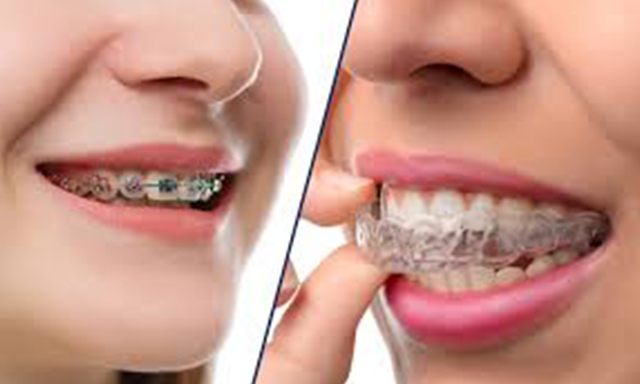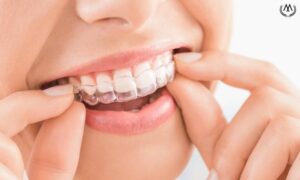Dental aesthetics and health are important to many people. Properly aligned teeth not only provide a more aesthetic smile but also positively impact oral health. Braces and clear aligners are two commonly used methods for correcting teeth alignment. However, in recent years, aligners have become increasingly popular due to their many advantages. So, why might aligners be a better option compared to braces?
1. Aesthetic Appearance
One of the biggest advantages of aligners is their nearly invisible appearance. Made from thin, clear plastic, these trays are not noticeably visible when worn over the teeth. This makes aligners particularly appealing for those concerned with aesthetics. Adults and teenagers often prefer aligners to feel more confident in their social lives or professional environments. Braces, on the other hand, consist of metal brackets and wires that are more noticeable and can be considered less aesthetically pleasing by some individuals.
2. Comfort and Ease of Use
Aligners provide a more comfortable experience than braces because they are custom-made trays that fit perfectly over the user’s teeth. Braces can cause discomfort due to friction against the lips and cheeks, leading to sores, whereas aligners do not cause such irritation. Additionally, aligners can be removed while eating, brushing, or flossing, making them more convenient and hygienic. Braces are fixed, which means they require extra care to avoid food particles and plaque buildup.
3. Treatment Duration and Predictability
Aligners generally offer shorter treatment durations. These custom-made trays gently and gradually move the teeth, which can result in a quicker treatment process compared to braces. Moreover, aligner treatment allows for the final position of the teeth to be predicted using 3D simulations from the start, giving patients a clear expectation of the outcome. In contrast, such visualization and precise time estimation are more challenging with braces.
4. Fewer Dental Visits
Aligner treatment typically requires fewer dental visits than braces. Patients usually need to visit the dentist every 6-8 weeks for check-ups and to receive new trays. Braces, however, require more frequent visits for adjustments and maintenance. This makes aligners a more convenient option for those with a busy lifestyle.
5. Oral Health and Hygiene
The removable nature of aligners allows you to brush and floss your teeth as usual, helping you maintain oral hygiene and reducing the risk of tooth decay or gum disease. Braces, being attached to the teeth, can create hard-to-clean areas, potentially posing a risk to dental health.
Conclusion
Aligners have several advantages over braces in terms of aesthetics, comfort, ease of use, treatment duration, predictability, and hygiene. When it comes to dental aesthetics and health, aligners stand out as a modern solution. Of course, since everyone’s dental structure and needs are different, consulting with a dentist to determine the most suitable treatment method is always the best approach. However, if you are concerned with aesthetics and value comfort in your daily life, aligners might be the ideal choice for you.






